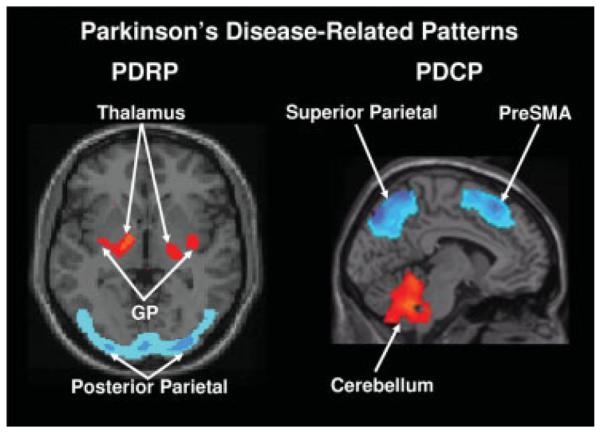FIG. 1.

Left: Parkinson’s Disease-Related Pattern (PDRP). This motor-related metabolic spatial covariance pattern is characterized by hypermetabolism in the thalamus, globus pallidus (GP), pons, and motor cortex, associated with relative metabolic reductions in the lateral premotor and posterior parietal areas.14 Right: Parkinson’s Disease-Related Cognitive Pattern (PDCP). This cognition-related metabolic spatial covariance pattern is characterized by hypometabolism of dorsolateral prefrontal cortex, rostral supplementary motor area (preSMA), and superior parietal regions, associated with relative metabolic increases in the cerebellum.17 [In the representative slices, relative metabolic increases are displayed in red; relative metabolic decreases are displayed in blue. For both patterns, the slices were overlaid on a standard MRI brain template.]
